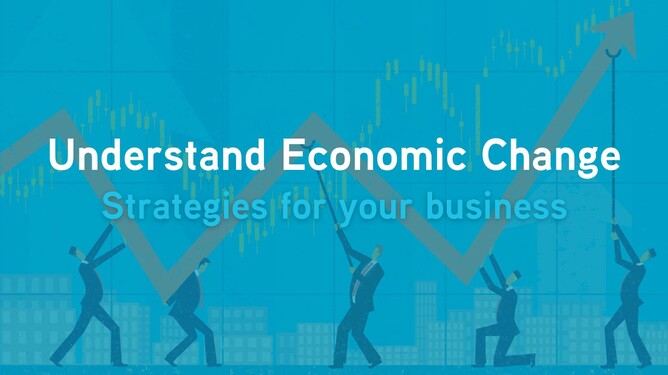Understanding the current economic changes is crucial for businesses to navigate challenges and seize opportunities. Recent data from the Office of National Statistics (ONS) and decisions by the Bank of England have provided a mixed picture of the economic landscape. Here's a breakdown of the key points and their implications for businesses, along with strategies to adapt effectively.
Growth in the Economy
The economy grew by 0.6% from January to March 2024, a positive sign following a 0.9% increase from the previous quarter. This growth indicates that the recent recession may be ending, suggesting a more favorable environment for businesses.
Interest Rates and Prices
The Bank of England has maintained the official interest rate due to persistent inflation concerns. The Consumer Price Index (CPI) decreased slightly from 3.4% in February to 3.2% in March 2024 but remains above the target of 2%.
Implications for Businesses
Economic Growth: The end of the recession and continued economic growth generally benefit businesses, providing opportunities for expansion and increased consumer spending.
Interest Rates: Stable interest rates mean higher borrowing costs, which can impact business loans and mortgages, making it more expensive for businesses to finance growth or operations.
Inflation: Persistent inflation means higher costs for goods and services, which can affect profit margins if businesses cannot pass these costs onto consumers.
Strategies for Businesses
To navigate these economic changes, businesses should focus on resilience and agility. Here are some actionable steps:
1. Strategic Financial Planning
Analyse Finances: Regularly review financial statements, sales data, and customer spending patterns. Identifying trends early can help anticipate risks and opportunities.
Budgeting: Create and maintain a flexible budget that can adapt to changing economic conditions. Include contingencies for unexpected expenses or revenue shortfalls.
2. Streamline Costs
Cost Efficiency: Evaluate your expenses to ensure you are getting the best value. This doesn’t always mean choosing the cheapest option but finding the most cost-effective solutions without compromising quality.
Supplier Review: Periodically review supplier contracts and negotiate better terms where possible. However, consider the reliability and quality of suppliers, not just cost.
3. Enhance Customer Satisfaction
Value for Money: Ensure your products or services provide good value to retain customers. Consider enhancing offerings to attract more customers.
Pricing Strategies: Review your pricing strategy to find a balance between competitiveness and profitability. Experiment with pricing models to see what resonates best with your market.
Customer Experience: Improve customer care to build stronger loyalty. Small adjustments in how you interact with customers can lead to better satisfaction and repeat business.
Conclusion
While the economic outlook is mixed, businesses can thrive by staying informed and prepared. Strategic planning and effective cost management are key to navigating these changes successfully. Enhancing customer satisfaction and value can also help businesses maintain and grow their customer base despite economic uncertainties.
Need Help?
Creating and maintaining a strategic plan can provide clarity and direction during uncertain times. If you don’t have a strategic plan or it’s been a while since you reviewed it, feel free to contact us to discuss how we can assist you in developing or refining your strategic plan to stay focused and resilient through economic changes.

